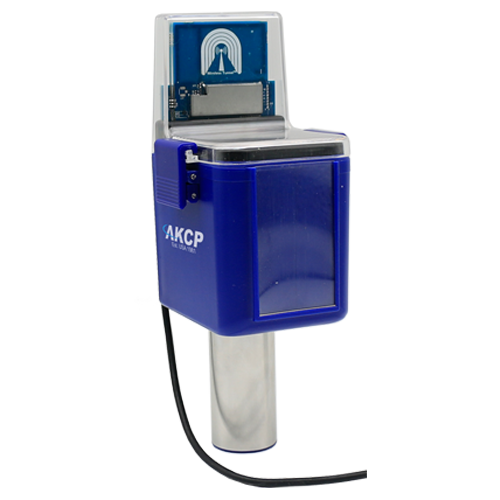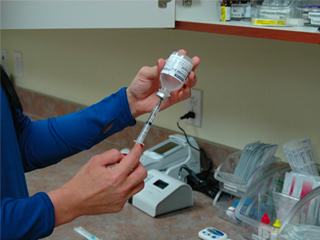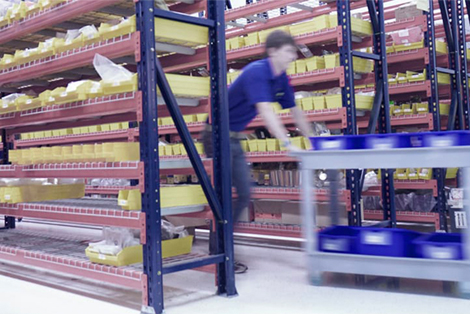Indoor Air Quality (IAQ) has a massive impact on the health of the occupants. Poorly ventilated spaces can lead to Sick Building Syndrome (SBS). Dust and indoor air particles can trigger respiratory problems, asthma and other health issues. The amount of time people spend indoors has increased over the years. Particularly during the COVID-19 pandemic with restrictions on outdoors movement and exercise. In addition, improvements in building insulation, and building codes that require proper sealing of buildings for improved efficiency have resulted in challenges bringing clean, fresh air into buildings. That is why it is essential to consider ways to improve indoor air quality.
Although it can feel cozy and safe being sealed inside a building on a cold and stormy day, for those with allergies and respiratory problems it can exacerbate these health issues. Warm, stale indoor air increases the amount of dust mites, pet dander and mold spores that are circulating in the building. Most of these are odorless and too small to see. This makes it a challenge as there is noting to alert you to the problems of poor IAQ. Often the only signs are the symptoms it can trigger such as asthma, fatigue, sleep and digestive issues.
So what can be done to help improve IAQ?
Keep facilities clean.
A clean indoor environment is a healthier place. Focus on reducing dust and mold in your home. Vacuum one or twice a week and ensure that the vacuum has a HEPA air filter installed. Also, having are flooring surfaces such as wood and tiles helps rather than wall to wall carpeting.
Regular Cleaning of Drapes and Bedding
These large fabrics attract allergens and trap dust. It is recommended they are washed in water that is at least 130°F. Washing beddings including duvets and pillows regularly also helps.
Reduce Clutter
Clutter provides places for dust to accumulate. Clearing the clutter reduces the amount of dust.
Keep Plants Outside
While plants are touted as improving indoor air quality as they release oxygen into the air, they also harbor mold and spores. For those with allergies keeping plants outdoors s probably a better idea.
Clean and Change Filters
If your facilities are equipped with forced air heating or cooling systems, changing or cleaning filters regularly is essential. Using electrostatic filers can also help as they attract and hold dust and airborne particles. This stops them being blown and circulated around your home. If you have centralized system with ductwork ten having the ducts cleaned out is helpful.
Air Purifiers
Place air purification systems in commonly used areas of the building. They circulate air through HEPA filters. Although they will not remove all airborne particles, they can help capture irritants and allergens. Some include UV lights as well that sterilize and kill airborne bacteria and virus’s. Particularly important during the COVID-19 pandemic.

Image source: https://en.wikipedia.org/wiki/HEPA
Dehumidifiers
Damp in buildings caused by high humidity levels encourage growth of mold. Basements, bathrooms and showers are all places that tend to be damp and humid. Scrubbing off visible surface mold and proper ventilation of these areas is essential.
Fresh Air
It may sound obvious, but allowing in fresh air, even during cold months, is one of the best ways to improve indoor air quality.
Air Quality Monitoring Sensors
Due to the invisible and odorless nature of indoor air contaminants sensors can be deployed to check for particles of various sizes and hazardous gases. AKCP Wireless Indoor Air Quality Sensors check for particles from PM 0.5 to PM 10. These particles can be from smoke, pollen and dust. The sensor also detects Metal Oxide Gases (MOx) displaying Volatile Organic Compounds Index. These harmful gases come from sources such as :-
– Acetone (eg. paints and glues)
– Toluene (eg. furniture)
– Ethanol (eg. perfume, cleaning fluids)
– Hydrogen Sulfide (eg. decaying food)
– Benzene (eg. Cigarette smoke)
Once you can quantify the problem, you can begin to make changes like those listed above and measure the improvements.






